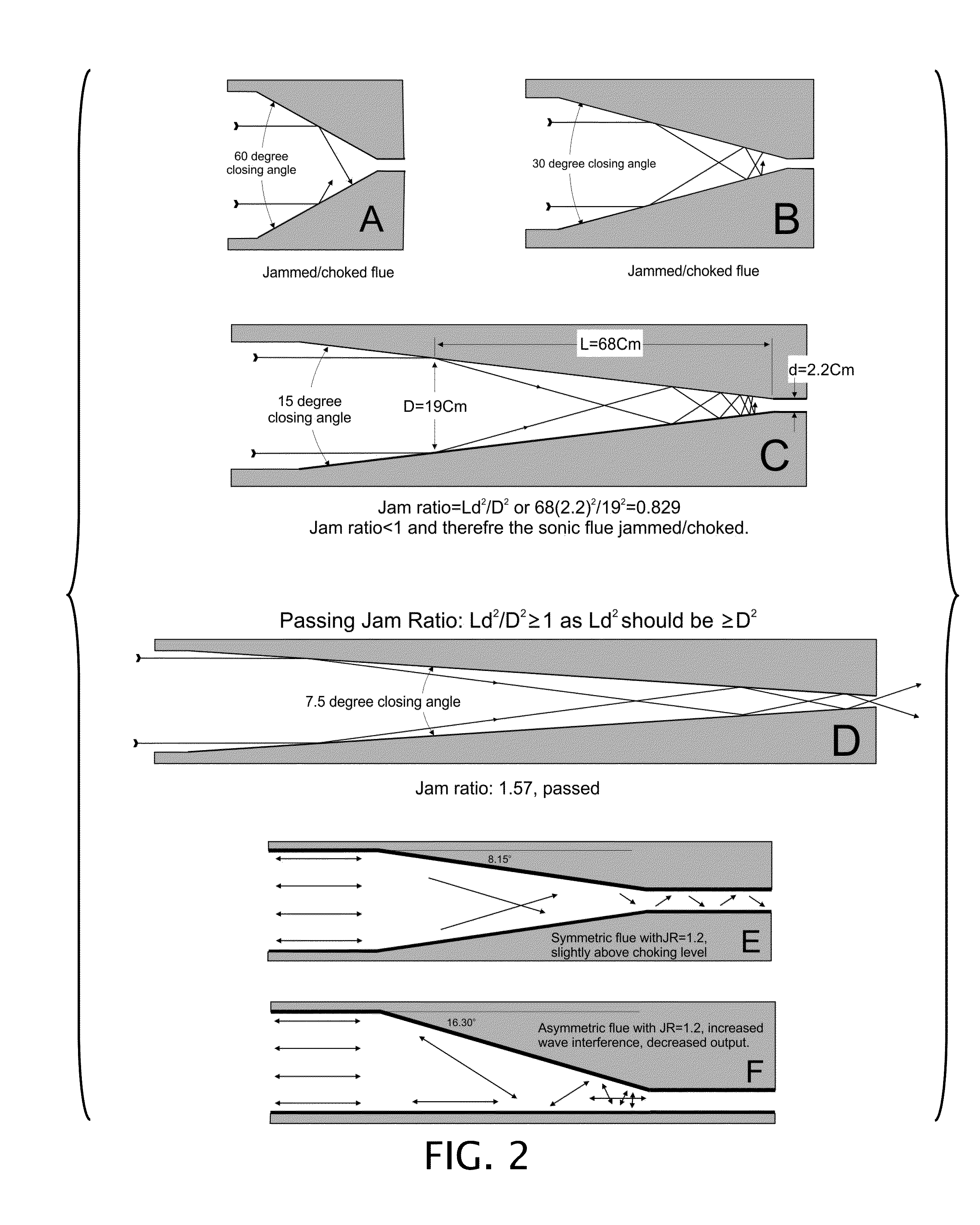Acoustic Ventilation and Respiratory Booster Machine
a technology of acoustic ventilation and a booster machine, which is applied in the direction of respirator, valve, operating means/releasing devices, etc., can solve the problems of high power limit, oscillatory rate, and hfov machines getting into a functional limitation in higher rates, so as to achieve exponential enhancement of alveolar ventilation
- Summary
- Abstract
- Description
- Claims
- Application Information
AI Technical Summary
Benefits of technology
Problems solved by technology
Method used
Image
Examples
Embodiment Construction
Brief Description
[0039]Physical design of HFOV machines gets them into a functional limitation in higher rates in a process to be called HFV choking phenomenon. Alveolar ventilation and CO2 clearance in HFV depends on Sp in patient airways. In difficult cases of CO2 retention such as RDS, these machines easily reach their highest power limit after which point the only way to improve alveolar ventilation would be to lower their oscillatory rates which is not desirable. Presently, there are no ventilator machines capable of sufficiently defying dire flow resistance of an ET tube confronting a low pulmonary compliance, a case of technological restraint contributing to high mortality and morbidity rates of certain ailments such as RDS.
[0040]Current invention describes a new method of ventilation of lungs in a safer meanwhile more effective and natural manner. It generates variable blocs of infrasonic, sonic, and ultrasonic pressure oscillations, ranging from 0-150 dB in power intensity,...
PUM
 Login to View More
Login to View More Abstract
Description
Claims
Application Information
 Login to View More
Login to View More - R&D
- Intellectual Property
- Life Sciences
- Materials
- Tech Scout
- Unparalleled Data Quality
- Higher Quality Content
- 60% Fewer Hallucinations
Browse by: Latest US Patents, China's latest patents, Technical Efficacy Thesaurus, Application Domain, Technology Topic, Popular Technical Reports.
© 2025 PatSnap. All rights reserved.Legal|Privacy policy|Modern Slavery Act Transparency Statement|Sitemap|About US| Contact US: help@patsnap.com



